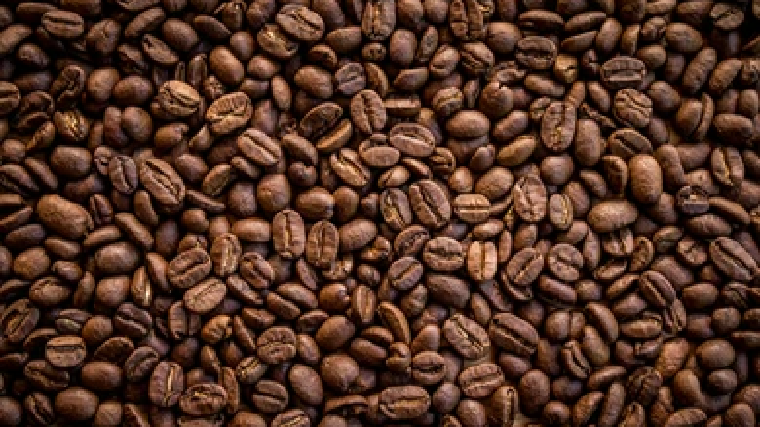Let’s get one thing straight: Foods and supplements that get labeled as “fat burners” are not magic and will not make a significant change without you making changes to your diet and lifestyle. Before-and-after photos that show keg bellies melting into six-packs shouldn’t be trusted — especially if their claim is that you’ll achieve that “after” body with a fat-burner alone. If you plan to utilize a fat burner, it should be used judiciously, alongside a healthy diet, and exercise plan, and with the OK of your physician or healthcare provider.
With all that said, there are indeed some compounds out there that may help with fat loss, be it indirectly (like appetite suppression or mood change) or directly (by increasing the amount of calories you burn through thermogenesis). It’s important to get the language right here because of all the supplements on the market, fat burners may be the most prone to unsubstantiated hype. But if you’re looking for a no-effort way to burn a few extra calories or curb your appetite, you might consider these products and ingredients. Some of them are foods you might be able to buy and add to your meals, others are considered “natural” because they come from plants.
The content on BarBend is meant to be informative in nature, but it should not be taken as medical advice. When starting a new training regimen and/or diet, it is always a good idea to consult with a trusted medical professional.
1. Caffeine
The reason most fat burners fall into the categories of “with” or “without stimulants” is because many of them contain a major hit of caffeine. Why? A big part of why caffeine wakes us up is that it blocks adenosine receptors. When the chemical adenosine fits into these receptors it makes you sleepy, if it’s blocked from doing so then it won’t. (There’s an argument to be made that caffeine doesn’t wake you up, it rather prevents you from being tired.)

Adenosine also appears to bind to fat cells and decrease the release of their fatty acids, plus caffeine also seems to increase adrenaline, which also helps to break down fats. Add all that to the fact that caffeine appears to slightly increase your caloric burn (though by less than a hundred calories per day) and it seems that consuming caffeine may help to reduce a little more of your body fat, so long as you’re in a caloric deficit. (1)
It’s good to note here that in order to lose weight, following CICO is one of the most reliable routes. CICO stands for calories in, calories out, and refers to the need to burn more calories than you are consuming in order to lose weight. This being said, 100 calories may not seem like a major amount of calories, but it can make a meaningful difference if you’re using CICO as a weight loss guide.
2. Vitamin D
This nutrient is so important that we evolved to be able to get it from the sun, which is ironically why most people are deficient. Vitamin D has strong links with mood and bone health, but it may also help with fat loss.

Some research has correlated high body fat with lower levels of Vitamin D and one study that put two groups of women on a calorie-restricted diet found that those taking a Vitamin D supplement lost 7 more pounds than those who didn’t. (2)(3) This might be because Vitamin D prevents the formation of new fat cells, suppresses the storage of fat, helps testosterone production, or some other mechanism. (4)(5) In any case, it’s smart to supplement or consume plenty of Vitamin D-rich food — fatty fish is the richest “natural” source of the stuff but a lot of milk and cereals have been artificially fortified with it, as well.
[Read more in our athlete’s guide to Vitamin D!]
3. Resistant starch
There are a lot more types of carbohydrates than just the sugar and fiber you see specified on a food’s nutrition label. Resistant starch is a carb that’s resistant to digestion — it doesn’t get fully broken down or absorbed (so it may technically provide fewer calories) and it digests so slowly that it’s a decent appetite suppressant. (6) In fact, it’s more filling, it’s better for insulin sensitivity and glucose tolerance, and it improves digestive health and gut bacteria.

If you’re looking to add more resistant starches into your diet, one study suggested that some of the highest resistant starches available after cooking were Italian bread, pumpernickel, corn flakes, raw bananas, white beans, and lentils. (7) Supplements are also available if you struggle to obtain resistant starches in your diet.
4. Forskolin
Found in the Indian herb Coleus forskohlii, it’s been traditionally used in Ayurvedic medicine to treat heart and respiratory issues but there’s pretty interesting research suggesting it could increase the amount of calories you burn. Supplementing it appears to signal to your cells to produce more ATP, the most basic form of cellular energy in the body. ATP is utilized for short and intense bursts of energy (such as running sprints) and is the energy system responsible for almost all cellular processes. (8) Therefore, taking forskolin seems to help the body burn through energy reserves.

This isn’t totally ironclad but there are human studies that have found 50 to 250mg per day can decrease body fat and maybe even increase testosterone. (9) Some research even found that topical forskolin cream may reduce body fat in certain areas. (10)
5. Probiotic bacteria
Probiotic food and drinks are becoming more popular with the wide diversity of kombucha drinks on the market, as well as foods like kimchi and sauerkraut readily available in grocery stores. Probiotic supplements are available as an over the counter supplement at grocery stores, pharmacies, and natural health stores across the United States. They may be utilized for issues, like bacteria vaginosis, urinary tract infections, allergies, respiratory diseases, and gastrointestinal issues. (11)

Ingesting a wide variety of probiotic bacteria could potentially help with digestive issues and overall gut health, which may affect weight loss capabilities. One study found, for example, that transferring the gut bacteria of an obese mouse to a lean mouse caused the lean mouse to gain body fat despite no change in diet. (12) More research is needed for the moment, but human studies have been very promising. In addition to supplementing, consuming probiotic-rich foods and fiber has also been linked to gut health benefits.
6. Yohimbine
This alkaloid derived from the Central African yohimbe tree is often used for focus, as a stimulant, or as an appetite suppressant. But as far as direct fat loss goes, it appears as though it may increase your basal metabolic rate. People usually split about 5 to 20 milligrams of the stuff over a day and there’s pretty decent evidence to suggest this can lead to greater fat loss. (13)

One three-week study on soccer players, for example, administered two 10-milligram doses per day and found the yohimbine group lost about 2 more body fat percentage points more than the placebo group. (14) While no side effects were reported in that study, yohimbine does have a reputation for causing digestive upset and sleep issues, so start out with smaller doses after speaking to your doctor first.
7. Chili peppers
It’s very common to see chili peppers included in fat burners, particularly cayenne pepper. There’s some evidence it can suppress the appetite but most companies highlight the studies that have suggested it can increase a person’s metabolic rate. (15)

As is usually the case, the difference probably isn’t gigantic. A 2003 study found that consuming chili peppers elevated metabolic rate by roughly 12 percent for 30 minutes (that’s about 5 extra calories burned for the average person) and another concluded that patients taking a chili pepper extract burned about 50 more calories per day. Still, it’s better than nothing. Generally speaking, chili peppers are one ingredient in a lineup of many, and may have more significant results when paired with other fat burners that they may work synergistically with. (16)(17)
8. Protein
A lot of people don’t realize that a whole macronutrient can help you burn more fat. Protein takes more energy to digest than carbs or fat so when it comes to the thermal effect of food, a hit of 30 grams of protein will result in the body burning more calories than 30 grams of carbs. (Carbs and protein have the same amount of calories per gram, whereas fat has more than twice as many calories per gram.)

What’s the difference? Pretty sizable: The thermic effect of protein is 20 to 30 percent, carbs are five to 10 percent, and fat is zero to three percent. (18) That means the body burns roughly three times more calories digesting protein than carbs. You may even want to add a protein powder to your daily supplement lineup to boost your protein intake.
Wrapping Up
If you’re interested in burning more fat, but don’t want to turn to an engineered fat burner, one of these eight natural fat burning ingredients may be of benefit to add into your routine. Whether you opt to drink black coffee to start your day, have a kombucha with lunch, or up your protein intake with each meal, there are many ways to incorporate these ingredients or supplements into your diet for a potential extra fat-burning push.
It’s critical to remember that weight loss is about calorie and nutrient balance, and all the fat burners in the world are unlikely to make any difference to your physique if you aren’t properly managing your calories through diet and burning enough calories to be in a caloric deficit. It’s also important to note that some fat burners can interfere with the absorption of medications, which is just one reason why it’s important to check with your doctor before undertaking any new diet routine.
References
- Dulloo AG, et al. Normal caffeine consumption: influence on thermogenesis and daily energy expenditure in lean and postobese human volunteers. Am J Clin Nutr. 1989 Jan;49(1):44-50.
- Parikh SJ, et al. The relationship between obesity and serum 1,25-dihydroxy vitamin D concentrations in healthy adults. J Clin Endocrinol Metab. 2004 Mar;89(3):1196-9.
- Mason C, et al. Vitamin D3 supplementation during weight loss: a double-blind randomized controlled trial. Am J Clin Nutr. 2014 May;99(5):1015-25.
- Wood RJ. Vitamin D and adipogenesis: new molecular insights. Nutr Rev. 2008 Jan;66(1):40-6.
- Chang E, et al. Vitamin D decreases adipocyte lipid storage and increases NAD-SIRT1 pathway in 3T3-L1 adipocytes. Nutrition. 2016 Jun;32(6):702-8.
- Higgins JA. Resistant starch and energy balance: impact on weight loss and maintenance. Crit Rev Food Sci Nutr. 2014;54(9):1158-66.
- Slavin JL. Carbohydrates, dietary fiber, and resistant starch in white vegetables: links to health outcomes. Adv Nutr. 2013 May 1;4(3):351S-5S. doi: 10.3945/an.112.003491. PMID: 23674804; PMCID: PMC3650507.
- Nirody JA, Budin I, Rangamani P. ATP synthase: Evolution, energetics, and membrane interactions. J Gen Physiol. 2020 Nov 2;152(11):e201912475. doi: 10.1085/jgp.201912475. PMID: 32966553; PMCID: PMC7594442.
- 9. Godard MP, et al. Body composition and hormonal adaptations associated with forskolin consumption in overweight and obese men. Obes Res. 2005 Aug;13(8):1335-43.
- Greenway FL. et al. Regional fat loss from the thigh in obese women after adrenergicmodulation. Clin Ther. 1987;9(6):663-9.
- Verna EC, Lucak S. Use of probiotics in gastrointestinal disorders: what to recommend? Therap Adv Gastroenterol. 2010 Sep;3(5):307-19. doi: 10.1177/1756283X10373814. PMID: 21180611; PMCID: PMC3002586.
- Kallus SJ, et al. The intestinal microbiota and obesity. J Clin Gastroenterol. 2012 Jan;46(1):16-24.
- McCarty MF. Pre-exercise administration of yohimbine may enhance the efficacy of exercise training as a fat loss strategy by boosting lipolysis. Med Hypotheses. 2002 Jun;58(6):491-5.
- Ostojic SM. Yohimbine: the effects on body composition and exercise performance in soccer players. Res Sports Med. 2006 Oct-Dec;14(4):289-99.
- Janssens PL, et al. Capsaicin increases sensation of fullness in energy balance, and decreases desire to eat after dinner in negative energy balance. Appetite. 2014 Jun;77:44-9.
- Chaiyata P, et al. Effect of chili pepper (Capsicum frutescens) ingestion on plasma glucose response and metabolic rate in Thai women. J Med Assoc Thai. 2003 Sep;86(9):854-60.
- Galgani JE, et al. Effect of dihydrocapsiate on resting metabolic rate in humans. Am J Clin Nutr. 2010 Nov;92(5):1089-93.
- Westerterp KR. Diet induced thermogenesis. Nutr Metab (Lond). 2004 Aug 18;1(1):5.